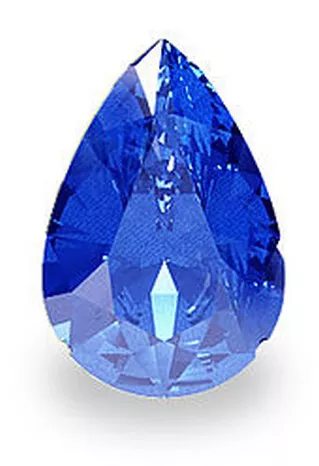Sapphire, with its mesmerizing blue hue and remarkable durability, has captivated humanity for centuries. This precious gemstone is highly sought after for its beauty and symbolism. From engagement rings to exquisite jewelry pieces, sapphires have adorned the lives of many. However, one burning question remains: how much does sapphire cost? In this article, we will delve into the factors that influence sapphire prices and explore the range of costs associated with this coveted gemstone.
Understanding Sapphire:
Before we embark on our journey to uncover sapphire prices, it is crucial to understand what makes this gemstone so unique. Sapphire belongs to the corundum family of minerals and is primarily composed of aluminum oxide. While traditionally known for its vibrant blue color, sapphires can also be found in various shades such as pink, yellow, green, purple, and even colorless (known as white sapphire).
Factors Influencing Sapphire Prices:
Color:
The color of a sapphire plays a significant role in determining its value. Blue sapphires, particularly those displaying vivid and intense hues, are generally more valuable. The ideal blue sapphire is a medium to dark-toned stone with minimal color zoning. Sapphires exhibiting rare colors like pink or padparadscha (a delicate pink-orange hue) can command even higher prices due to their scarcity.
Clarity:
Similar to other gemstones, sapphires are graded based on their clarity. Inclusions, which are natural internal characteristics, can affect a sapphire’s clarity and subsequently its value. The presence of fewer inclusions results in better clarity and a higher price tag. However, it’s important to note that some inclusions, such as silk-like rutile needles, can enhance the beauty of a sapphire and add to its unique appeal.
Cut:
The cut of a sapphire determines how well it reflects light, ultimately affecting its brilliance and sparkle. A well-cut sapphire will exhibit optimal light return, enhancing its overall attractiveness. The precision and quality of the cut are crucial factors that contribute to a sapphire’s value.
Carat Weight:
Sapphire prices increase exponentially as carat weight rises due to their rarity in larger sizes. It’s important to note that carat weight alone does not determine a sapphire’s value. Factors such as color, clarity, and cut must be considered in conjunction with carat weight to accurately assess its worth.
Origin:
The origin of a sapphire can significantly impact its price. Sapphires from historically renowned regions such as Kashmir, Myanmar (formerly Burma), and Sri Lanka (formerly Ceylon) are highly sought after for their exceptional quality and scarcity. These origin-specific sapphires often command premium prices in the market.
Exploring Sapphire Price Range:
Now that we have a deeper understanding of the factors influencing sapphire prices, let’s explore the wide range of costs associated with these captivating gemstones.
At the lower end of the spectrum, smaller sapphires (around 0.5 carats) with good color, clarity, and cut can be found starting at a few hundred dollars. These sapphires may have slight color zoning or minor inclusions that do not significantly affect their appearance.
Moving up the scale, sapphires in the 1 to 2-carat range with excellent color, clarity, and cut can range from a few thousand dollars to tens of thousands of dollars, depending on their specific characteristics.
As we venture into the high-end market, sapphires exceeding 5 carats or possessing rare color attributes can reach astronomical prices, often exceeding six figures. These exceptional sapphires are highly sought after by collectors and connoisseurs alike.
Additional Factors Affecting Sapphire Prices:
Treatment:
While natural, untreated sapphires are considered more valuable due to their rarity, the majority of sapphires on the market undergo some form of treatment to enhance their color and clarity. Common treatments include heat treatment to intensify color and fracture filling to improve clarity. Treated sapphires tend to be more affordable compared to their untreated counterparts.
Market Demand:
Like any other commodity, sapphire prices are subject to market demand and economic factors. Fluctuations in supply and demand, as well as changes in consumer preferences, can impact sapphire prices significantly. Additionally, prestigious designers or historical significance associated with specific sapphires can drive up the price through increased demand.
Conclusion:
Sapphires have a timeless allure that continues to captivate jewelry enthusiasts around the world. While sapphire prices can vary greatly depending on factors such as color, clarity, cut, carat weight, and origin, there is a wide range of options available to suit different budgets and preferences. At the lower end of the spectrum, smaller sapphires with good color, clarity, and cut can be found at affordable prices starting from a few hundred dollars. Moving up, larger sapphires with exceptional qualities can range from a few thousand dollars to tens of thousands of dollars. The high-end market caters to collectors and connoisseurs seeking sapphires exceeding 5 carats or possessing rare color attributes, often commanding prices in the six-figure range.
It’s important to consider that treatments like heat treatment and fracture filling are common in the sapphire industry and can affect the price. Natural, untreated sapphires are generally considered more valuable due to their rarity. However, treated sapphires can offer more affordable options without compromising on beauty.
In conclusion, the cost of sapphires varies greatly depending on factors such as color, clarity, cut, carat weight, and origin. While sapphires can be found at various price points, it’s essential to prioritize the quality and characteristics that matter most to you. Whether you’re looking for an exquisite engagement ring or a stunning piece of jewelry, sapphires offer a timeless elegance that will continue to enchant for generations to come.


